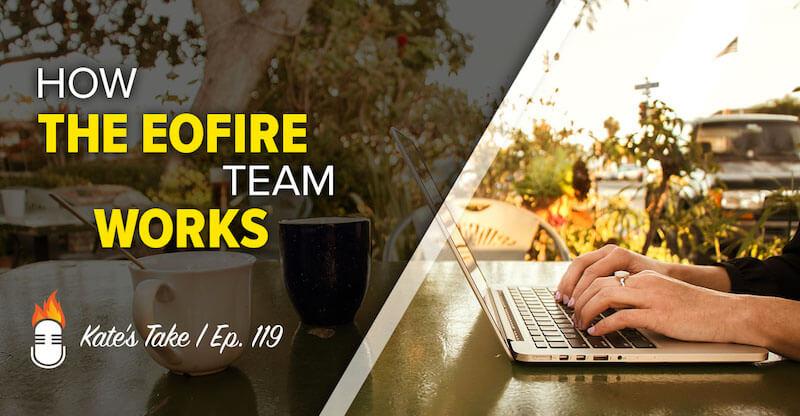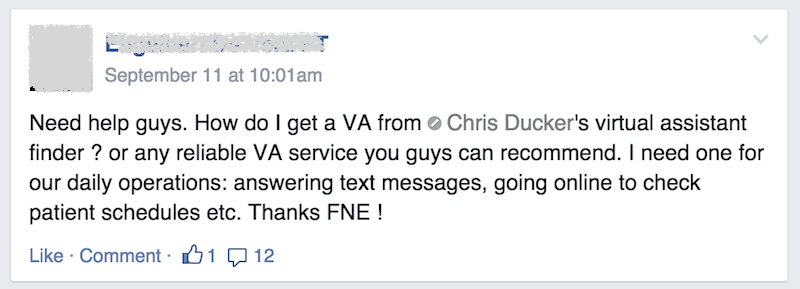
We talk a lot about the importance of listening to your audience when it comes to growing your business.
In fact, when we share exercises or actions you might take in order to find your perfect customer, (or your avatar), a huge part of that is *listening* to what they have to say and familiarizing yourself with their language.
This also extends to you discovering what it is you can create to help solve your avatar’s biggest pain points. They will literally tell you once you find them.
But it doesn’t always come in the form of questions.
It doesn’t always come in the form of an email reply.
And sometimes, it might not even appear to be an insight for you into the world and/or struggles your avatar is having at all.
But the more you practice really listening to your audience, the better you’ll become at recognizing trends, and identifying the pain points enough members of your audience have that it comes time for you to create a resource for them.
What listening to your audience looks like
I’m actually creating this post as a direct result of listening to Fire Nation.
It wasn’t a question, and it wasn’t a direct email in response to us asking for feedback – it was a simple – yet powerful – Tweet from Mike Stenhouse:
We love talking about how we’ve built our team, and how we continue to work so well together, because we know that it’s been one of the major reasons for our success.
Without our team, we certainly wouldn’t be where we are today. So thank you, Mike, for asking us to create this!
But before I dive into that topic: How the EOFire Team works, I really want to be clear about what listening to your audience looks like – what it actually means – and how it can be so powerful on your journey to discovering what really matters to your audience.
Because it wasn’t just Mike who mentioned a struggle, or sent us a request for info on something related to hiring, building, growing a team – in fact, someone in our Fire Nation Elite Mastermind Tribe is going through the process right now.
He even started his post out with “Need help guys.”
This isn’t the first time we’ve had several members of our audience clue us in to the fact that hiring and growing a team for your business is a struggle.
In fact, earlier this year I created a series on hiring a virtual assistant after hearing from a number of people that they were interested in what we went through when hiring our team.
I split the series up into 3 parts in order to see what the feedback on each of the steps would be: the process, how to delegate, and establishing a relationship. I knew splitting the series up would give me even more insights into exactly which parts of the process our audience was struggling with most.
Here are some of the comments I saw on those posts:
Do you see the common theme that runs through every single one of these pieces of feedback from our audience?
Does it make sense that we would piece these together and create a resource that can help our audience learn more about how to hire a virtual team, and then how to actually grow that team so you have a force that drives your business – together?
I hope so, cause now it’s time to dive into what Mike asked in the first place: How does the EOFire Team work?
How the EOFire Team works (and our top tips for entrepreneurs looking to grow a team)
1. Hire slow
You’d be surprised at the amount of time and care that goes into actually bringing a team member on board. It’s hard work.
I don’t recommend that you go out and hire 2 virtual team members at the same time if this is your first time hiring someone, and I also don’t recommend that you go searching for a full-time virtual team member if you don’t already have a very clear picture of exactly what you’re going to delegate to them yet.
2. Set roles
Roles are what have brought us success, freedom and sanity in our business.
Without the roles John and I have set for ourselves, who knows, maybe we would drive one another a little crazy here and there (that’s what most people say when they hear we work together: “WHAT?! I could NEVER work with my significant other!”)
When you set roles and they’re clear to everyone involved, you take a lot of the guesswork, miscommunication and frustration out of the equation that could very easily slip in if you don’t set roles.
Example of setting roles
If you’re a solopreneur and you’re looking to hire a full-time virtual team member, actually write out a role for yourself and for that future team member.
I like to define roles by categories just because I find it’s easier to establish things that way. Then, you can “niche down” within those categories once you recognize and know what your strengths are versus the other people on your team.
If I were doing this for myself and John, I would probably start by writing out:
Kate
Writing
Project management
Follow up
John
Podcasting
Sponsorships
Marketing
JM
Social media
Scheduling
Show notes pages
This doesn’t mean that John is never going to write, or that I’m never going to do any marketing for the business, or that JM has nothing to do with our sponsorships, but for the sake of dividing and conquering, you should be giving the different roles on your team categories that they’re responsible for based on what each team member is best at.
How do you know what their best at? You can take an assessment, like Sally Hogshead’s How To Fascinate to find out what helps you (and your team) “fascinate”.
3. Know responsibilities
This sort of goes along with setting roles, but it’s the “niche” part where you really start to dig into the categories you’ve assigned each team member to figure out exactly what responsibilities each person will have.
Again, doing this is going to take a lot of the guesswork, miscommunication and frustration out of the equation that could very easily slip in if you don’t know one another’s responsibilities.
Let’s take sponsorships as an example
If you take a look at my role categories versus John’s versus JM’s, you might even be able to guess how the sponsorship responsibilities are divided. Here it goes:
The management of it all (project management) is my responsibility. Every month, I’m working with the Midroll to make sure we have what we need for a successful month ahead.
The actual reads you hear on EOFire? You guessed it – that’s me (writing). We get talking points from our sponsors, and I write unique reads for every one of our sponsors using John’s voice.
The actual sponsorships themselves? Well that’s on John (podcasting). The sponsors are paying for a spot on EOFire, and since John is the podcast host, it only makes sense that John would be responsible for recording them and placing them in each episode.
You may have noticed that we list our sponsors on our actual show notes pages, too. Since JM is the one who checks to make sure everything is in place and working on our show notes pages before they go live, that’s on her to be sure we have the right sponsors linked on their corresponding episodes.
4. Check in often
Checking in with your team is one of the most important things.
Letting your team know you’re there for them. Letting them know you have their back, are willing to answer questions, are there for support – this seriously means the world to them.
I know as a team member myself, that I wouldn’t have been able to do anything I’ve done here at EOFire without John’s support. Without him checking in with me in the beginning to make sure I understood what was going on in the podcasting industry.
Without support, help, guidance, and like-minded people who are on the same team as you, your journey can get a bit lonely – it can even become scary, or not so fun anymore. I’m sure you can relate – maybe not now, but at some point on your journey.
Virtual team members experience the same thing. They’re on an island – they don’t have an office or co-workers that they see in an office every day. YOU as the business owner are responsible for creating that space for them online, and checking in is one of the best ways you can do that.
Mentioned in this episode
Chris Ducker’s Virtual Staff Finder (our top recommendation for finding qualified virtual team members)
Trivinia Barber’s Priority VA (for US-based Virtual Team Members)
UpWork (formerly ODesk – great for project-based virtual team members who won’t be full-time)
Virtual Team Blog & Podcast Series (further reading):
Want to know more about EXACTLY what each of the EOFire team members is responsible for? What are Jess’s roles day-to-day? John’s? Kate’s? Let me know in the comments section below, and I’ll create it!





